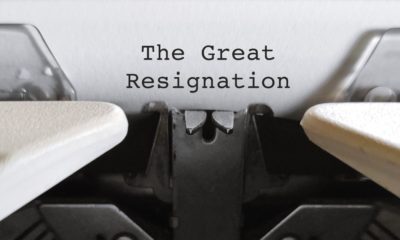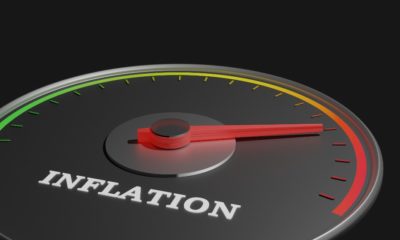Business
How To Get Out Before The Stock Bubble Pops

Warren Buffett famously stayed away from technology and internet stocks during the dot-com bubble. As the bubble grew larger and larger, he knew investors would get greedy and stick around too long. In his 2000 letter to shareholders he wrote:
“They know that overstaying the festivities—that is, continuing to speculate in companies that have gigantic valuations relative to the cash they are likely to generate in the future—will eventually bring on pumpkins and mice. But they nevertheless hate to miss a single minute of what is one helluva party. Therefore, the giddy participants all plan to leave just seconds before midnight. There’s a problem, though: They are dancing in a room in which the clocks have no hands.”
Now, 20 years later, as it appears we are in another state of euphoria in the stock market, with the S&P 500 hitting new all-time highs, tech stocks like Salesforce jumping 26% in a single day and trendy companies like Tesla seeing their share price jump 500% in a matter of months.
And just like the dotcom bubble, day trading has replaced baseball as the national pastime.
The challenge facing investors today is exactly what Buffett mentioned 20 years ago. Back then, he said you don’t want to sell everything now and miss the rest of the party.
Peter Lynch, the legendary Wall Street investor and former Fidelity manager, once said: “Far more money has been lost by investors preparing for corrections, or trying to anticipate corrections, than has been lost in corrections themselves.”
But you also don’t want to be standing around when the clock strikes midnight.
So what can investors do to keep dancing while the music is playing, but also ensure they have a chair nearby for when the music stops?
One solution comes from the founder of Cambria investments, Meb Faber.
Faber developed a straight-forward approach that has an incredible track record.
He says at the end of every month, you look to see if the index you are following is still above its 200-day moving average.
If it is, you can keep dancing for another month.
If the index is below its 200-day moving average, you grab your chair and sit down. You stop dancing and get out of the market.
You can watch the index and the end of each month. If it climbs back above its 200-day moving average, you can buy back in.
It doesn’t get any simpler than that.
Faber has tested this approach for both US and international stocks, REITs, commodities and Treasury bonds.
Using this system, you would have exited the S&P 500 in February of this year, and gotten back in at the end of May.
You would have successfully avoided the sharp drop in March and caught the upswing a few months later.
If you think that stocks are in a bubble but don’t want to miss out on the move higher, consider this approach to your own portfolio.
Up Next:















